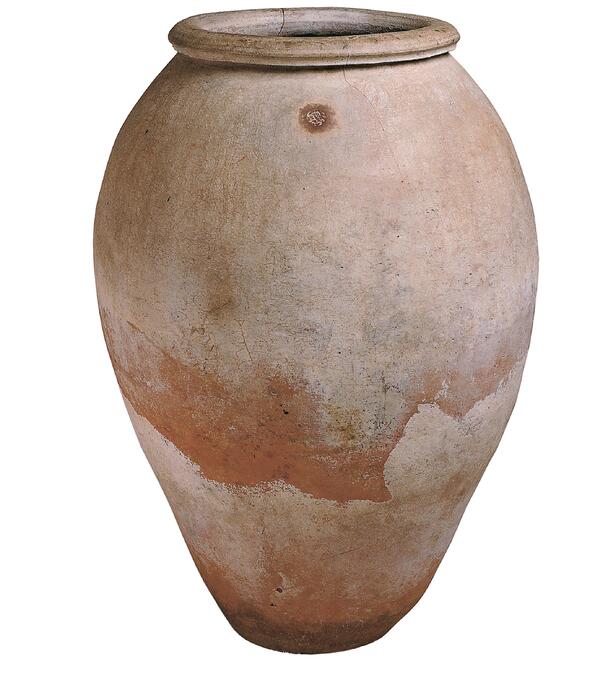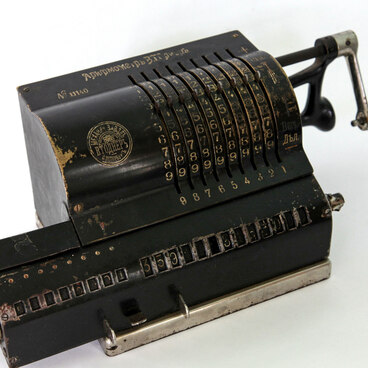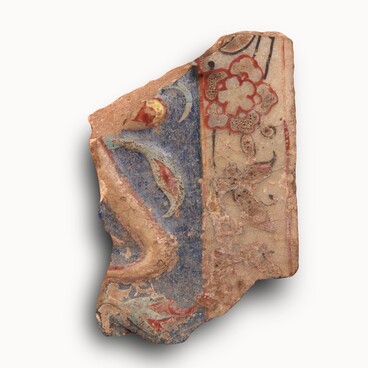According to Vladimir Aronovich Livshits, a Soviet and Russian linguist, the name “khum” comes from an old Iranian word for a large clay vessel, as well as any earthenware that was prepared for firing, and also the very site where the firing took place.
Such meanings are attested for the word “xumb” in the language of the inhabitants of the Yaghnob valley in Tajikistan. They may also reflect the semantics of this word in the Sogdian language, which is considered an ancestor of the Yaghnob language, as well as in some other East Iranian languages.
The oldest mention of the word “khum” was recorded in a document dated the second century BC, which was found in the area of the ruins of the Nisa city on the territory of modern Turkmenistan. According to Vladimir Aronovich Livshits and orientalists Mikhail Mikhailovich Dyakonov and Igor Mikhailovich Dyakonov, who studied the documents, in this case the word was used to mean a measure of capacity for liquids.
The archeologist Michael Eugenevich Masson specified the meaning of the word. He believed it was a capacity measure of wine, as the Parthian inscriptions on the clay shards, that were found at Nisa, mentioned the collection of taxes from the taxed vineyards.
Nowadays, the word “khum” refers to large vessels for storing food supplies. It can be wine and water as well as grain. The term is common in the Middle East and Central Asia among Turkic-speaking and Iranian-speaking peoples.
Craftsmen made khums mostly on a slow spinning potter’s wheel. Usually, two or three pieces of the right size were made and then joined together. This was followed by drying and firing in special ceramic kilns. Before firing, holes were made in the bottoms of some khums with a round stick. This improved air circulation and prevented the grain from drying out and getting moldy.
Khums were used in the Golden Horde cities. They were buried about 2/3 of their height to keep the temperature low. One of the vessels in the museum collection has the stamp with the master’s name on the side surface.
Such meanings are attested for the word “xumb” in the language of the inhabitants of the Yaghnob valley in Tajikistan. They may also reflect the semantics of this word in the Sogdian language, which is considered an ancestor of the Yaghnob language, as well as in some other East Iranian languages.
The oldest mention of the word “khum” was recorded in a document dated the second century BC, which was found in the area of the ruins of the Nisa city on the territory of modern Turkmenistan. According to Vladimir Aronovich Livshits and orientalists Mikhail Mikhailovich Dyakonov and Igor Mikhailovich Dyakonov, who studied the documents, in this case the word was used to mean a measure of capacity for liquids.
The archeologist Michael Eugenevich Masson specified the meaning of the word. He believed it was a capacity measure of wine, as the Parthian inscriptions on the clay shards, that were found at Nisa, mentioned the collection of taxes from the taxed vineyards.
Nowadays, the word “khum” refers to large vessels for storing food supplies. It can be wine and water as well as grain. The term is common in the Middle East and Central Asia among Turkic-speaking and Iranian-speaking peoples.
Craftsmen made khums mostly on a slow spinning potter’s wheel. Usually, two or three pieces of the right size were made and then joined together. This was followed by drying and firing in special ceramic kilns. Before firing, holes were made in the bottoms of some khums with a round stick. This improved air circulation and prevented the grain from drying out and getting moldy.
Khums were used in the Golden Horde cities. They were buried about 2/3 of their height to keep the temperature low. One of the vessels in the museum collection has the stamp with the master’s name on the side surface.



